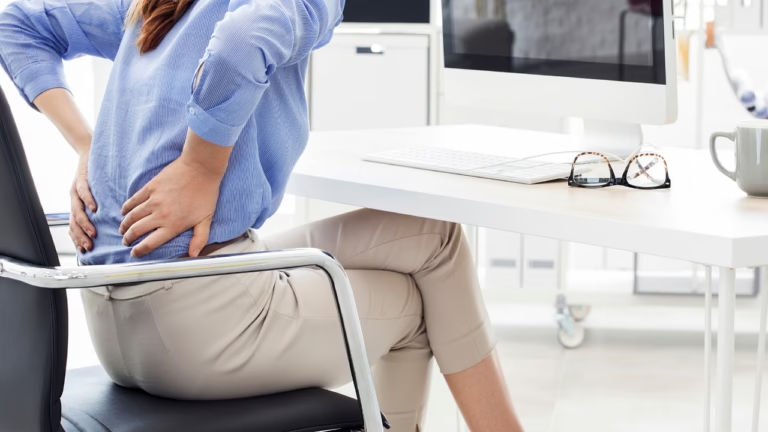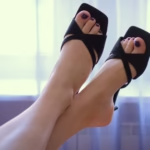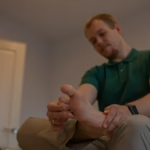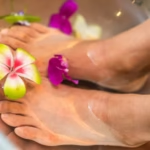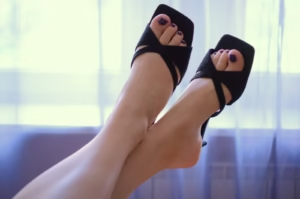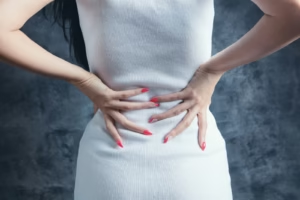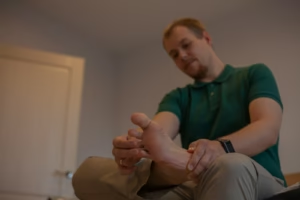Why Lower Back and Hip Pain Affects So Many Women
Here’s a statistic that might surprise you: 1 in 3 women will experience pain in lower back and hips female at some point in their lives—a statistic that’s way more common than you’d probably assume.
According to the American Physical Therapy Association, this top-notch plaguing pain is way more common that alot of people think. So if you’re reading this because you’re dealing with it right now – trust us, you’re definitely NOT alone.
The Real Impact of Pain
Your lower back and hip pain isn’t just going to limit you to the odd gym sesh or weekend adventure. It’s going to creep into your daily life and catch you off guard in ways you never expected:
- Bending down to pick up the slack ( err groceries never seems as easy as it used to be)
- Waking up feeling like you’ve been put through a wringer almost every day
- Having to give up on the things you used to love, just because theyre a bit too painful now
- Struggling through long meetings at work, wincing in discomfort the whole time
- Lying there tossing and turning all night, just trying to get some sleep
And the worst part? Loads of women just assume this is something they’re stuck with for the rest of their lives.
It doesn’t have to be that way though.
In this article we’ll get to the bottom of what causes pain in lower back and hips in women. We’ll give you some real, practical tips you can start using right away to make things a bit better. And most importantly – we’ll help you figure out when it’s time to get some proper help from the people who can sort you out.
So let’s get going.
Understanding Pain in Lower Back and Hips Female
Your lower back and hips are in this weird partnership where if one goes out of whack- either gets tight or weak – the other has to pick up the slack. Problem is, over time, this seesawing causes all sorts of problems – back pain, stiffness, and not being able to move around as much as you’d like.
Why Women Are More Prone to Back & Hip Issues
Look, women face a whole bunch of unique factors that just make lower back and hip pain a lot more likely:
Hormonal fluctuations throughout your monthly cycle can really do a number on your muscle flexibility and ligament stability.
Being pregnant completely flips your center of gravity and puts a ton of pressure on your lower spine.
Menopause – well, that brings on some bone density and muscle elasticity changes that aren’t much fun.
And let’s not forget pelvic structure – women have a wider pelvis & how forces move through your lower spine and hips change as a result.
A Pattern You May Be Familiar With
Think about your regular day-to-day – you sit at your desk for 8 hours at work, then drive home with your head down for another hour or so. Your hip flexors get all tight and your glutes get weak and your lower back ends up arching to compensate. Then, come the weekend you’re itching to go on a hike – but even just doing some light bending feels like torture.
Here’s the Good News: This whole thing can be turned around.
Getting a handle on how your lower back and hips are connected is step one to relief and finally being pain-free.
Recognizing Symptoms and When to Seek Professional Help
Early awareness is a game-changer when it comes to dealing with Pain in Lower Back and Hips Female – it lets you tackle the problem before it takes hold and becomes a chronic issue
Knowing the warning signs puts you in the driver’s seat – you can act fast, before things start to spiral out of control.
Things you might start to notice
- You wake up with persistent stiffness – and it’s not just the usual morning grogginess
- You get sharp pains whenever you bend forward or reach across your body
- You start to feel a dull ache after spending too much time sitting around
- Your hip or lower back starts clicking or popping – it’s not exactly fun
- Pain starts radiating down your leg, and you might even get numbness or tingling sensations
Warning signs to keep an eye on
- Your stiffness lasts longer than 30 minutes in the morning
- You get sharp or shooting pains when you move in a certain way
- Walking, climbing stairs, or even getting up from chairs becomes a struggle
- Your pain gets worse after exercise or when you’ve been sitting around for too long
- You start to feel muscle weakness or like you’re about to tip over on your feet
- You get numbness, tingling, or burning sensations running down your leg
When to give the professionals a shout
Most Pain in Lower Back and Hips Female can be sorted out with some physiotherapy, no problem.
But if this happens, get in touch with a healthcare pro:
- Symptoms stick around for longer than two weeks
- Your pain suddenly takes a turn for the worse without any obvious reason
- You get numbness in your leg – it’s not something to mess around with
- Pain starts interfering with your daily routine
Effective Treatment Options and Relief Strategies
Here’s what you need to know: Relief is possible.
Whether you’re dealing with mild discomfort or more severe pain, physiotherapy has proven strategies that work.
Why Physiotherapy Works
Physiotherapists don’t just mask symptoms – they address the root cause.
A good physiotherapist will identify:
- Weak muscles not supporting your spine
- Tight areas restricting your movement
- Bad movement habits causing your pain
- Postural imbalances creating strain
Then they guide you towards lasting change through targeted exercises, hands-on therapy and personalised movement patterns.
Self-Care Is Just As Important
Combining professional guidance with daily habits equals powerful long-term results.
You don’t need a gym membership or complicated routines. Simple consistent actions work best.
Evidence-Based Relief Strategies
Gentle stretching routines Hip flexor, piriformis and hamstring stretches reduce tension. Many women notice improvement in days.
Core strengthening exercises Building your deep abdominal muscles stabilises your spine and reduces compensatory strain on your hips and back.
Heat and cold therapy Alternating heat and ice reduces inflammation and muscle tension. Use for 15-20 minutes at a time.
Postural awareness Correcting sitting and standing positions prevents recurring pain. Small changes make big differences over weeks.
Low-impact activity Walking, swimming and cycling keeps you fit without aggravating your injury or pain.
A Story That Proves It Works
Meet Sarah.
She had three months of sharp hip pain. Her morning yoga practice – something she loved – became impossible.
After her first physiotherapy session, Sarah realised how tight her hip flexors were. Her therapist gave her a simple 10 minute daily routine.
By the fourth session she was back to gentle yoga. By eight weeks her pain was gone.
Now Sarah maintains her progress with preventative stretching three times a week. She hasn’t had a flare up in over a year.
What Research Tells Us About Lower Back and Hip Pain
Research shows one clear result:
Targeted physiotherapy beats passive treatment for lower back and hip pain in women.
A study in Spine found patients who received individualised exercise programs had 60% more improvement than those who just took medication.
The Latest Research
Movement based recovery works. Your body adapts quickly to proper mechanics and strengthening.
This isn’t just about feeling better today – it’s about being better for tomorrow.
Women who do physio and preventative exercise have fewer recurring episodes. In fact early intervention saves you years of potential discomfort.
Preventing Future Pain in Lower Back and Hips – Female
Prevention – The Best Medicine Around
Building healthy habits right now is the best way to protect your future mobility, independence, and overall quality of life.
Time to Evaluate Your Daily Habits
- How long do you spend just sitting around without getting up and moving?
- What’s your posture like when you’re stuck at your desk or driving around in your car?
- Do you ever make the time to stretch at all?
- Are you carrying around extra stress in your shoulders or lower back?
Making a few tweaks to your daily routine can have a huge impact over time.
Long-term Health Habits That Really Work
Get your core strong through Pilates or doing some targeted exercises at home twice a week – even just 15 minutes a day can make a real difference.
Take a break every hour if you work at a desk. Get up, stand, stretch and move about for two minutes – it makes a huge difference.
Lift properly – use your legs to do the work, not your back. This one habit alone will help protect your spine every single day.
Keep your weight in check so you don’t put too much strain on your back and hips.
Stay hydrated and get anti-inflammatory foods like berries, leafy greens and fatty fish into your diet. Helps with managing inflammation.
Make sure you get regular check-ups with your physiotherapist, even if you’re not in any pain right now. Prevention is always, always easier than treatment.
A Simple Habit That Really Works
Try adopting a 10 minute pre-bed stretch routine – something gentle that you can do before drifting off to sleep.
What happens is you’ll start waking up with some real flexibility in the morning. A lot of women start noticing a real difference within a week of doing this – reduced morning stiffness and all.
Taking the First Step Toward Better Health
You absolutely deserve to be able to move without being in pain.
It doesn’t matter if you’re dealing with just a little bit of discomfort or if it’s making everyday tasks a real challenge – you can find some relief. When you combine good old fashioned evidence-based physiotherapy with some smart day-to-day self-care habits, you can start to get results that really last.
Pain in Lower Back and Hips Female – shouldn’t have to run your life.
It all starts with getting a better handle on what’s going on inside your body – spotting those early warning signs and taking the first steps towards change. When you do that you can start to get your mobility and confidence back.
Just think, every single expert who’s good at what they do – including physios – was once a total beginner. So your journey to movement without pain starts with just one decision – you get started today.
What you can do next:
Why not give us a call to book in for a physio consultation. And if you’re specifically looking for guidance on womens health then you should also take a look at that page on our site – we’ve got some really useful stuff on there. Do yourself a favour and make your body a priority for once.
So are you ready to figure out which relief strategy might be the one that actually works for you?
References
- American Physical Therapy Association (APTA) – Patient statistics and clinical guidelines on musculoskeletal pain https://www.apta.org
- Mayo Clinic – Lower Back Pain Information https://www.mayoclinic.org/diseases-conditions/lower-back-pain/
- Spine Journal – Clinical Research on Exercise Interventions https://www.spine.org
- National Center for Biotechnology Information (NCBI) – Physiotherapy and Hip Pain Studies https://www.ncbi.nlm.nih.gov/pubmed
- International Society of Physical Medicine and Rehabilitation https://www.isprm.org

